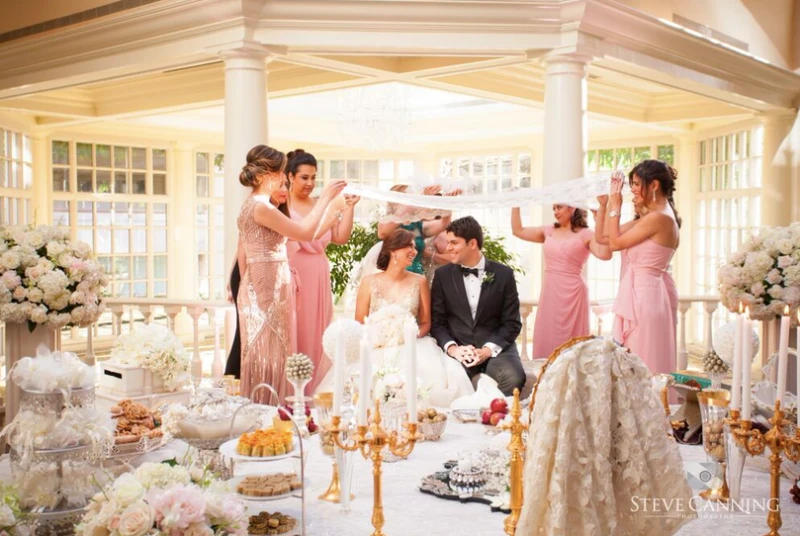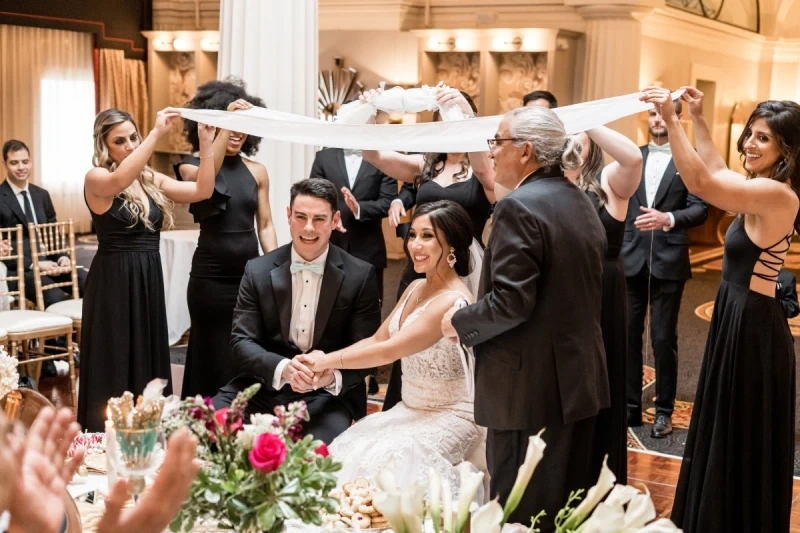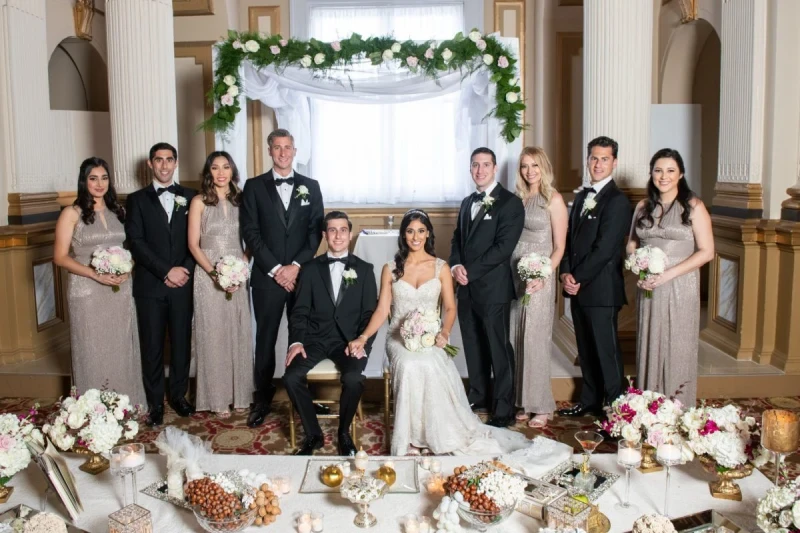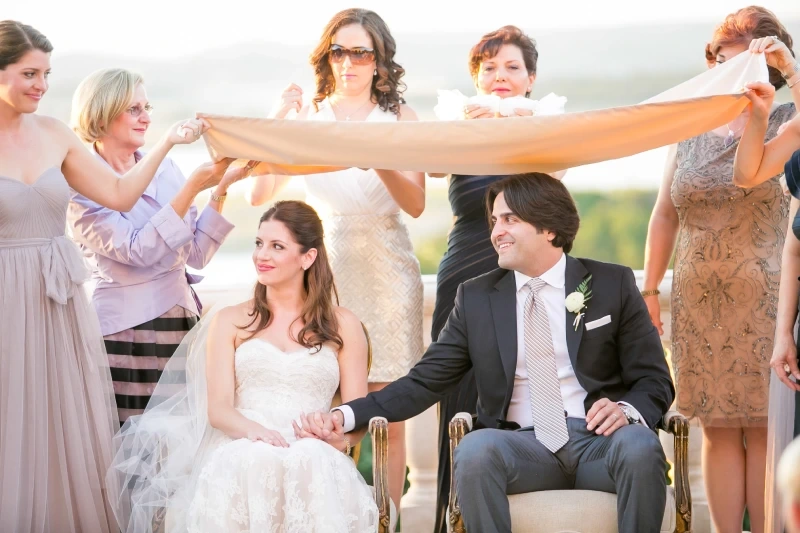Welcome to the world of Persian weddings, where love, culture, and opulence intertwine to create unforgettable celebrations. If you’re curious about the cost of a Persian wedding, you’ve come to the right place.
A Persian wedding is a grand affair, known for its exquisite details and lavish feasts. From the extravagant decor to the sumptuous cuisine, no expense is spared to create a truly unforgettable experience.
However, it’s important to note that the cost of a Persian wedding can vary greatly depending on a multitude of factors. The venue, guest list, entertainment, and floral arrangements are just a few of the elements that contribute to the overall cost.
On average, a Persian wedding in the United States can range from $30,000 to $100,000 or even more. This includes expenses such as the venue rental, catering, photography/videography, and attire.
Whether you’re planning your own Persian wedding or simply curious about the costs involved, join us as we delve into the world of Persian weddings and uncover the average expenses associated with these extravagant celebrations.
The cultural significance of Persian weddings
Persian weddings are steeped in rich traditions and cultural significance, serving as a beautiful reflection of the values and history of the Iranian people. The ceremony itself is a tapestry woven from centuries of customs that emphasize family, community, and the sacred bond of marriage. Historically, weddings were not just a union of two individuals; they represented a joining of families, reinforcing social ties and establishing alliances that would benefit both parties. This cultural ethos is still very much alive today, as families come together to celebrate the love and commitment of the couple.
Central to a Persian wedding is the Jahaz or Jahaz-e-Aroosi, which refers to the dowry that the bride brings into the marriage. This aspect is not merely a financial transaction but symbolizes the bride’s family’s support and blessings as she embarks on this new chapter of her life. Additionally, the Sofreh Aghd, a beautifully adorned spread that features symbolic items representing fertility, prosperity, and happiness, is a focal point of the ceremony. The Sofreh is an intricate and artistic display that showcases the couple’s cultural heritage and is often elaborately decorated to reflect the families’ tastes.
Furthermore, the rituals and ceremonies involved in a Persian wedding are often infused with poetry, music, and dance, celebrating the couple’s love in a joyous manner. The importance of storytelling through these elements is evident, as traditional Persian poetry often plays a significant role in the proceedings. This not only enhances the emotional depth of the celebration but also educates the younger generations about their heritage. The cultural significance of these weddings extends beyond the day itself, as the memories and traditions are passed down, ensuring that the essence of Persian heritage remains vibrant.
Factors that influence the cost of a Persian wedding
When planning a Persian wedding, several factors can significantly influence the overall cost. One of the most prominent factors is the guest list. Persian weddings are typically grand affairs, often accommodating a large number of guests, which can range from 200 to over 500 attendees. The more guests you invite, the more expenses you will incur, including catering, venue size, and accommodations. Couples must carefully consider their budget and the number of guests they wish to invite, as this will play a crucial role in determining the total cost of the wedding.
Another significant factor influencing expenses is the choice of venue. Persian weddings often take place in luxurious banquet halls, hotels, or even outdoor spaces that can accommodate a lavish setup. The location can dramatically alter the budget, as upscale venues typically charge higher rental fees, especially during peak wedding seasons. Additionally, certain venues may require specific catering services or decorators, which can further add to the overall expense. Couples should explore various options and consider the pros and cons of each venue to find one that aligns with their vision and budget.
Moreover, the time of year can also impact wedding costs. Peak seasons for weddings, such as spring and summer, often see increased prices for venues, catering, and services due to high demand. Conversely, off-peak seasons may offer discounts or lower rates, making it more affordable for couples to plan their dream wedding. Understanding these factors will help couples create a realistic budget that accommodates their desires while remaining mindful of their financial limitations.
Venue and catering expenses
Selecting the right venue is one of the most significant decisions when planning a Persian wedding, and it comes with a hefty price tag. The venue sets the tone for the celebration, and many couples opt for luxurious spaces that can accommodate a large number of guests. Renting a banquet hall or an upscale hotel can cost anywhere from $5,000 to upwards of $20,000, depending on the location and amenities provided. This fee typically includes tables, chairs, and sometimes even basic décor, but couples often find that they need to spend more to create the desired ambiance.
Catering is another substantial expense in a Persian wedding budget. The culinary experience is a cornerstone of these celebrations, with a focus on traditional Persian dishes that delight the senses. A professional catering service specializing in Persian cuisine can charge between $30 and $100 per person, depending on the menu selection and the number of courses. Traditional dishes such as Fesenjan (a walnut and pomegranate stew), Joojeh Kabab (grilled chicken), and a variety of rice dishes are often included, along with an array of appetizers and sweets. Couples must carefully consider their menu options to balance quality with their overall budget.
In addition to the basic catering costs, couples should also factor in expenses related to serving staff, bar services, and any special requests they might have for the meal, such as unique dietary requirements or additional courses. Many couples choose to include a buffet-style meal or a plated service, which can impact costs differently. Ultimately, it’s essential to work closely with the chosen caterer to understand all aspects of the catering package and to negotiate where possible to fit within budget constraints.
Traditional Persian wedding attire and its cost
Attire for a Persian wedding is not just a matter of personal style; it is a representation of cultural heritage and tradition. The bride typically wears a stunning gown that blends modern design with traditional elements, often adorned with intricate embroidery and luxurious fabrics. The cost of a bridal gown can vary greatly, ranging from $1,500 for a simple design to over $10,000 for a custom-made gown by a renowned designer. Many brides opt for a dress that reflects their unique personality while still honoring traditional Persian aesthetics, which often include vibrant colors and elaborate detailing.
In addition to the bridal gown, the groom’s attire also plays a vital role in the wedding. Grooms typically wear a tailored suit or a traditional Shervani, which can range from $500 to several thousand dollars, depending on the style and material chosen. Accessories such as shoes, ties, and cufflinks can further add to the total cost. It’s common for couples to invest in high-quality attire that they can cherish as keepsakes, making this a worthwhile expense in their wedding budget.
Moreover, it’s essential to remember that Persian weddings often include traditional pre-wedding ceremonies, such as the Baleh Boran (the ceremony where the bride is presented to the groom’s family) and the Khastegari (the formal proposal). For these events, couples may choose to wear different outfits, leading to additional costs. With multiple events leading up to the wedding day, budgeting for various attire options becomes crucial, ensuring that both the bride and groom feel their best throughout the celebration.
Wedding decorations and floral arrangements
The visual splendor of a Persian wedding is often defined by exquisite decorations and floral arrangements. The Sofreh Aghd, which serves as the centerpiece for the ceremony, is adorned with a variety of beautiful items, including fruits, flowers, and symbolic objects that represent love and prosperity. Creating this stunning display requires careful planning and investment, with costs ranging from $2,000 to $10,000, depending on the intricacy and quality of the decor. Couples often work with experienced decorators who understand the cultural significance of each element and can bring their vision to life.
Floral arrangements play a significant role in enhancing the overall aesthetic of the wedding. Persian weddings often feature an abundance of flowers, including roses, peonies, and orchids, which are used in centerpieces, bouquets, and throughout the venue. The cost of floral arrangements can vary widely based on the types of flowers chosen and the seasonality, with budgets ranging from $1,500 to $5,000. Couples may opt for fresh flowers or even consider silk arrangements for a more cost-effective option without sacrificing beauty.
Additionally, other decorative elements such as lighting, table settings, and backdrops contribute to the overall cost of the wedding decor. Custom lighting setups that create an enchanting atmosphere can range from $1,000 to $5,000, depending on the complexity of the design. Couples should take the time to explore various decoration styles that reflect their personalities while also remaining within their budget. By prioritizing key elements and being resourceful, they can achieve a stunning aesthetic without overspending.
Music and entertainment costs
Music and entertainment are essential components of any Persian wedding, contributing to the overall atmosphere and ensuring that guests have an unforgettable experience. Traditional Persian music, often performed live, sets the mood for the celebration, and hiring a professional band or DJ can range from $1,500 to $5,000 or more. Couples may choose to hire musicians who specialize in Persian instruments such as the Santur or Tar, creating an authentic ambiance that resonates with their cultural heritage.
In addition to live music, many couples opt for a DJ who can mix contemporary hits with traditional Persian songs. This blend of music caters to a diverse audience, ensuring that all guests have a great time on the dance floor. When considering entertainment, couples might also want to invest in additional performers, such as belly dancers or traditional folk dancers, who can enhance the celebratory atmosphere. The cost for these performers can vary but typically starts around $500 and can go up depending on the length of their performance and travel requirements.
Furthermore, couples should consider the costs associated with sound equipment, lighting, and any necessary permits for outdoor music performances. Ensuring that the sound system is of high quality is crucial for creating an enjoyable experience for all attendees. By carefully selecting entertainment options that align with their budget and vision, couples can create a lively and memorable celebration that resonates with their guests long after the wedding day.
Photography and videography expenses
Capturing the essence of a Persian wedding through photography and videography is vital to preserving the memories of this once-in-a-lifetime event. Professional photographers who specialize in wedding photography can charge anywhere from $2,000 to $10,000, depending on their experience, packages, and the duration of coverage. It’s essential for couples to thoroughly research photographers to find someone whose style resonates with them, as this will ensure that their unique story is beautifully captured.
In addition to photography, couples often choose to hire videographers to document the day in motion. Videography packages can range from $1,500 to $8,000, depending on the length of the coverage and the complexity of the editing process. Many couples find that investing in both photography and videography is worthwhile, as it allows them to relive the day through different mediums. Highlight reels and full-length films can later serve as cherished keepsakes that encapsulate the joy of the celebration.
Couples should also consider any additional costs associated with photography and videography, such as travel fees if the professionals are coming from another location, or extra charges for specific requests, like drone footage or same-day edits. To make the most of their budget, couples can look for package deals that include both photography and videography services, allowing them to save money while ensuring comprehensive coverage of their special day. By prioritizing quality in these services, they can create lasting memories that will be treasured for years to come.
Wedding planner fees
Hiring a wedding planner can be a game-changer when it comes to organizing a Persian wedding, especially given the complexity and detail involved in these celebrations. A skilled wedding planner can help couples navigate the myriad of decisions and arrangements, ensuring that every detail aligns with their vision. The cost of hiring a wedding planner can vary widely, typically ranging from $2,000 to $10,000, depending on their experience, the services offered, and the scope of the wedding.
One of the advantages of working with a wedding planner is their ability to negotiate with vendors, which can lead to cost savings in various areas of the wedding budget. A well-connected planner can recommend reputable vendors for catering, florals, and entertainment, helping couples avoid potential pitfalls that could arise from hiring less experienced professionals. Additionally, planners can assist in creating timelines and checklists, ensuring that everything runs smoothly on the wedding day itself.
Moreover, for couples who may wish to be more involved in the planning process while still seeking assistance, many planners offer partial planning services. This option allows couples to handle certain aspects of the wedding while still benefiting from the planner’s expertise in other areas. Regardless of the level of service chosen, investing in a wedding planner can ultimately lead to a more enjoyable planning experience and a beautifully executed event that reflects the couple’s unique love story.
Conclusion and tips for budgeting a Persian wedding
Planning a Persian wedding can be an exciting yet overwhelming experience, especially when it comes to budgeting for the various elements involved. Understanding the average costs associated with each aspect of the wedding can help couples make informed decisions that align with their financial situation. From venue and catering expenses to attire and entertainment, each component contributes to the overall experience of the celebration.
One key tip for budgeting a Persian wedding is to prioritize expenses based on personal values and cultural significance. Couples should identify which elements are most important to them, whether it’s the food, decor, or entertainment, and allocate funds accordingly. This approach allows for a more meaningful celebration that reflects their unique tastes and cultural heritage while remaining within budget.
Additionally, seeking out package deals and negotiating with vendors can lead to significant savings. Many vendors offer discounts for booking multiple services or off-peak pricing during less popular wedding seasons. Couples should also consider DIY options for certain elements, such as invitations or decor, which can help reduce costs while adding a personal touch. By being resourceful and strategic in their planning, couples can create a stunning Persian wedding that honors their culture and love without breaking the bank.





